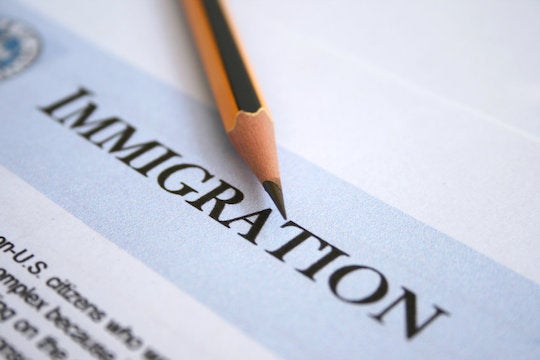The United States' immigration system is failing to provide the nation's economy with enough high-skilled and productive workers to grow and remain competitive on a global scale, according to a new report from experts at Rice University's Baker Institute for Public Policy.
"The American workforce will be under enormous stress as demographic changes impact the larger economy," write co-authors Tony Payan, director of the Baker Institute's Center for the United States and Mexico, and Pamela Lizette Cruz, research analyst at the center.
U.S. population growth has been slowing for years, and in 2021, the population grew by the lowest rate since the nation's founding - just 0.1%. The population is also aging; the Census Bureau projects that by 2034, Americans 65 and older will outnumber those under 18 for the first time in the nation's history.
Immigration reform could relieve the stress caused by these demographic trends and ensure America's stability and competitiveness in the global economy, the authors argue.
"There is an urgent need for Congress to act, especially after the COVID-19 pandemic highlighted the many barriers, challenges, vulnerabilities and inequities facing vulnerable populations such as the elderly and immigrants, and exposed key weaknesses in the U.S. labor market," they write. "It is also paramount for the United States to invest in its essential workforce now and for the future."
 "Although more older Americans are working than in previous decades, their numbers will not keep up with the need for labor in key sectors of the economy - especially in the service industries," they add.
"Although more older Americans are working than in previous decades, their numbers will not keep up with the need for labor in key sectors of the economy - especially in the service industries," they add.
The next decade will see net international migration to the U.S. overtake native births as the largest driver of population growth, according to the report. American fertility rates fell by 4% in 2020, a record low for the country.
"And because, increasingly, migrants from Latin America and Asia are younger and their fertility rates higher than in previous years, the U.S. will become more ethnically diverse," the authors write.
Currently, people of color make up 23% of the 65-and-older population in the U.S. That number is projected to increase to 45% by 2060.
"This will have serious implications for the development of a workforce with linguistic and cultural skills that fit the needs of a growing, diverse population," they write.
Payan and Cruz argue that the U.S. should establish new legal immigration avenues and broaden existing ones to address the future needs of the economy.
"Determining the ideal level of immigrant inflows is challenging and often politicized and polarizing, but the United States must modernize an outdated immigration system that is incapable of adapting to the long-term problems ahead," they write. "Preparing for the coming changes goes beyond studying demographic trends; it requires innovative strategies and solid policy responses."
Payan and Cruz write that immigration "should be viewed as the greatest opportunity to bolster overall growth and build a stronger, legal workforce, and keep America thriving in an increasingly competitive world economy."






